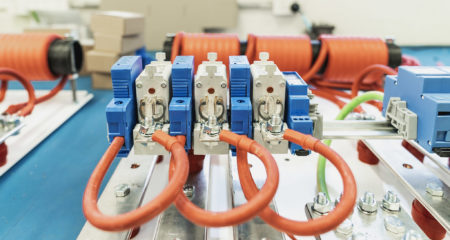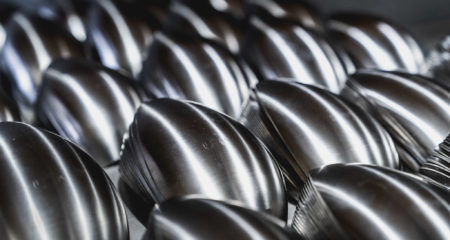User Manuals
TDS – Bluetooth Surge Protection Range
Download PDF
Installation Instructions – SRIMPLUS-20
Download PDF
Installation Manual – Stormaster
Download PDF
Installation Manual – Guardian Plus
Download PDF
Installation Manual – Guardian
Download PDF
Installation Instructions – UTERMKIT-Mk3
Download PDF
Installation Instructions – UBRCT35120
Download PDF
Installation Instructions – UBRC35120 and UBRCT253120
Download PDF
Installation Instructions – SRIM-20
Download PDF
Installation Instructions – RESLO-20
Download PDF
Installation Instructions – Mechanical Earthing Connections for OPTUS
Download PDF
Installation Instructions – GRIP-40
Download PDF
Installation Instructions – GRIP-10
Download PDF
Installation Instructions – EPR Safety Mat
Download PDF
Installation Instructions – EPIT-P & SCER3020
Download PDF
Installation and Operating Manual – LWS MIII
Download PDF
TDS – Air Terminal Tester
Download PDF
TDS – CHEMROD 63
Download PDF
TDS – Coaxial Surge Protection
Download PDF
TDS – DLSF Series
Download PDF
TDS – GRIP
Download PDF
TDS – ILC-36
Download PDF
TDS – LAN-RJ45 Cat6
Download PDF
TDS – LSR and Tester
Download PDF
TDS – POE RJ45-CAT5
Download PDF
TDS – RESLO
Download PDF
TDS – SG Surge Protection Device
Download PDF
TDS – SRIM
Download PDF
TDS – Stormaster
Download PDF
TDS – VHS-K10
Download PDF
TDS – DD Range
Download PDF
Installation Instructions – LTERMKIT-Mk3
Download PDF
TDS – HVSC Plus
Download PDF
Product Documentation
TDS – Bluetooth Surge Protection Range
Download PDF
TDS – LSR and LSR Tester
Download PDF
Design Request Form – Conventional Protection
Download PDF
Technical Paper – Merits of ESE Technology
Download PDF
Flyer – SRIMPLUS-20
Download PDF
Installation Instructions – SRIMPLUS-20
Download PDF
TDS – SRIMPLUS-20
Download PDF
Brochure – Conventional Protection
Download PDF
LPI SPD APP Instructions
Download PDF
Product Drawing – SCER 19 Range
Download PDF
Product Drawing – SCER 15 Range
Download PDF
Product Drawing – DL-5751
Download PDF
Product Drawing – DL-4751
Download PDF
Test Certificate – Certificate of Analysis – SRIM
Download PDF
Test Certificate – IEC 62561-2 – CATIII-G
Download PDF
Test Certificate – IEC 62561-2 – CATII-G
Download PDF
Test Certificate – IEC 62561-2 – CATI-G
Download PDF
Test Certificate – IEC 62561-2 – GPLUS-3SS
Download PDF
Test Certificate – IEC 62561-2 – GPLUS-2SS
Download PDF
Test Certificate – IEC 62561-2 – GPLUS-1SS
Download PDF
Test Certificate – Monash LPR Report on RESLO
Download PDF
Test Certificate- Monash LPR Report on SRIM
Download PDF
Test Certificate – STORMASTER-ESE-15
Download PDF
Test Certificate – STORMASTER-ESE-30
Download PDF
Test Certificate – STORMASTER-ESE-50
Download PDF
Test Certificate – STORMASTER-ESE-60
Download PDF
Test Summary Certificate – RESLO
Download PDF
UL Certificate of Compliance
Download PDF
TDS – Guardian Plus
Download PDF
TDS – Guardian System 5
Download PDF
TDS – HVSC Plus
Download PDF
TDS – Lightning Warning System and Tester
Download PDF
TDS – TEC100-2L
Download PDF
MSDS – SRIM-20
Download PDF
MSDS – RESLO-20
Download PDF
MSDS – GRIP Part 2
Download PDF
MSDS – GRIP Part 1
Download PDF
Flyer – Surge Protection for UPS
Download PDF
Flyer – NBN Approved LPI Products
Download PDF
Flyer – LPI’s Products Recommended for OPTUS Projects
Download PDF
Flyer – EPR Safety Mat
Download PDF
Flyer – Earth Enhancing Compounds
Download PDF
Product Drawing – DL-6502
Download PDF
Design Request Form – Stormaster
Download PDF
Design Request Form – Guardian Plus
Download PDF
Design Request Form – Guardian
Download PDF
Design Request Form – Earthing
Download PDF
Certificate – ISO 14001 2015
Download PDF
Certificate – ISO 9001 2015
Download PDF
Handbook – Earthing
Download PDF
Brochure – Telco Solutions
Download PDF
Brochure – Summary
Download PDF
Brochure – Stormaster
Download PDF
Brochure – Solar Farms & Battery Storage
Download PDF
Brochure – Lightning Warning System
Download PDF
Brochure – Lightning Protection for Vessels
Download PDF
Brochure – Guardian Plus
Download PDF
Brochure – Guardian
Download PDF
Brochure – EPR Safety Mat
Download PDF
Installation Instructions – LTERMKIT-Mk3
Download PDF
Certificate of Compliance and Warranty Registration
Download PDF
FAQs
What is the warranty on LPI products?
All LPI products have a 5 year warranty period, except our Lightning Warning System which has a 1 year warranty.
What is the warranty on LPI products?
All LPI products have a 5 year warranty period, except our Lightning Warning System which has a 1 year warranty.
What is the warranty on LPI products?
All LPI products have a 5 year warranty period, except our Lightning Warning System which has a 1 year warranty.
What is the warranty on LPI products?
All LPI products have a 5 year warranty period, except our Lightning Warning System which has a 1 year warranty.
We witness very little lightning, why do we need surge protection?
Although some areas see little lightning activity, transients generated locally from power generation / distribution system and internally generated from on-site drives, pumps and welding equipment often cause partial or complete system failure. Companies today depend on their control and network systems, so the system up-time is paramount. For every company, a single surge-related incident causing the loss of system availability would far exceed the cost of proper surge protection.
We use a UPS, do we still need surge protection?
A UPS is designed to provide clean, uninterruptible power to critical equipment. It normally does not provide AC power protection to the many downstream devices connected within the network. The surge protection elements found within a UPS unit are usually single element protection components and not capable of handling the large steep-front surges like dedicated, stand-alone SPD’s.
Where can I use the Bluetooth-enabled SPDs?
The SST150B is a high-performance surge protection unit for IEC/AS Class II applications. It is designed for use in Main Switchboards, Sub Boards and on end-of-line circuits. The application areas of the SST105B are endless, e.g., industrial, commercial, domestic, specialised operations such as emergency services, telecommunications, water / waste water, process control etc. The SST150B can be installed to protect remote pumping stations, irrigation systems, remote rail signalling locations, remote gas pipeline operations etc., all of which require routine inspection. The SST150B enables large cost and time savings on inspections. When used in large production facilities, it can be used in conjunction with a preventive maintenance plan to allow for quick and easy inspections by any personnel available.
Why do I need Bluetooth functionality in SPDs?
For a long time, surge protection devices have been locked away waiting for something to happen. In most cases, surge protection may only be installed only if specified. The introduction of embedded Bluetooth surge protection allows for greater scope of installation, where the secondary function of Bluetooth communication can allow for instantaneous monitoring and offer greater flexibility of ownership. This innovation now allows for routine system checks that in the past may have required a high hourly rate professional to conduct the inspection, the supply of a master key to contracting companies which may compromise security agreements, or where arc flash hazards may be present. With Bluetooth 4.1, these problems are a thing of the past because the information can be retrieved at a safe distance, never needing to open the enclosure, and within a few seconds all the vital information can be ascertained.
Is Status Indication available for your AC surge devices?
Yes, all LPI SPDs come complete with an LED indicator which visually indicates the state of the device. Furthermore, with the use of the Alarm Interface Module (AIM), a set of volt-free contacts can provide remote indication of the status of SPDs.With the increasing use of mobile devices, e.g., phones and tablets, in the work place, there is a growing shift in how we interface with our electrical devices. LPI has integrated BLUETOOTH functionality within its AC power protection line. This world-leading LPI innovation allows quick and easy access of your SPD to check the device’s health status as well as the operating electrical data such as temperature, voltage, surge count and power quality, without having to open the enclosure.
What is the minimum distance an earth rod or earth grid can be located from buried gas service lines?
There is no fixed distance, since it depends on the soil resistivity, magnitude of the lightning current injected into the rod, size of the earth grid and the safe voltage criterion of the gas service provider.
Is there a difference between an earth grid for power and lightning?
Yes, there is a significant difference. Whilst both earthing systems should always be bonded together (either directly or via a transient earth clamp), lightning discharges have a “critical length” in soil, beyond which they will not travel. The critical length depends on the soil resistivity. For typical soil resistivities, the critical length varies from about 5 m to 50 m. Power system earth grids can generally be much larger than this critical length due to the low frequency involved (50 or 60 Hz).
Should I be concerned about the corrosion performance of an earth enhancing compound?
Absolutely. Customers should always ask about test certificates etc. for the compound they wish to use. All EECs should be tested to standard IEC 62561-7 to ensure that they do not cause accelerated corrosion of earth electrodes.
Do earth enhancing compounds help with meeting earthing targets?
Yes, very much so. As a general rule, the application of an accredited EEC like RESLO or SRIM will lower the resistance of the earthing system by at least 50%. Their use will also stabilise the earthing system against seasonal variations.
In Australia we have the AS 1768 Lightning Protection standard and it makes no mention of ESE or enhanced air terminals. Can I still use them?
AS 1768 is a non-mandatory standard, which means it does not have to be used if other options exist. It is essentially a guide providing information on design, installation and maintenance of conventional lightning protection systems. The end user may choose to use other lightning mitigation techniques in line with international other standards and manufacturer’s instructions.
Will your air terminal attract lightning to my location?
No, this is a common misconception regarding enhanced air terminals. The fact is that even passive structures have a “collection area” for lightning. As an example, the collection area of LPI’s Stormaster ESE ensures that lightning is captured over the design protection area to a desired point, from which the discharge can be safely dissipated into the ground. This is a fundamental principle backed by standards. LPI air terminals comply with various international standards, including NF C 17-102, IEEE 998 and IEC 62561.
Why should I use LPI’s HVSC Plus lightning cable rather than a conventional bare or common insulated conductor?
HVSC Plus has been developed specifically to handle fast lightning transients and in fact is equivalent to using more than 10 conventional down conductors. It has an impulse voltage withstand rating of more than 500 kV and leads the market in its specifications and reliability in the most lightning prone areas of the world. Please contact LPI for a complimentary copy of various technical papers on HVSC Plus.
What standard and technology should I use to protect my substation or associated power system?
Unfortunately, at the time of writing, standards such as AS 1768 and IEC 62305 exclude power systems from their scope. So, it is important to use IEEE Std. 998. This standard includes traditional methods such as protection angle and rolling sphere but also newer leader propagation methods such as the leader inception theory (LIT). LPI has developed a family of air terminals called “Guardian Plus” that comprise the technology / hardware side of protecting substations in compliance with IEEE 998.
Is it true that there is a difference between sharp and blunt rods?
Absolutely. This question was posed as far back as the time of Benjamin Franklin and really only started to be answered in the 1980’s and 1990’s. A landmark study by Prof Charlie Moore et al on a mountain in New Mexico has demonstrated comprehensively that blunt rods are superior to sharp rods. The reasons relate to the amount of space charge over the rod – sharp rods produce so much that the space charge inhibits the capture of a lightning strike. LPI’s market-leading air terminals all use the blunt rod principles from this landmark study. In fact, LPI was the first company to fully embrace this important concept.
Is the testing of an ESE terminal important?
Yes, the test procedure outlined in the current version of NF C 17-102 (dated 2011) should be strictly followed. Some vendors claim to have testing performed to NF C 17-102 when in fact the tests were done incorrectly. LPI has published a document that outlines the key points that should be checked. Please contact LPI for your complimentary copy of this paper.
What approvals and certificates do you have for your air terminals?
LPI has test certificates and approvals for all of its air terminals. These approvals may be to NF C 17-102, IEC 62561 series or test standards such as IEC 60060. Before buying air terminals, customers should always ask the vendor for these certificates and approvals in order to ensure a quality product is being purchased.
Should there be Direct Strike protection on the side of my structure?
The consequences of a strike to the sides of a building may result in damage of a minor nature. Unless there are specific reasons for side protection, as would be the case with a structure containing explosives, it is considered that the cost of side protection will not normally be justified.
Can't find what you're looking for? Get in touch with us.
Contact UsLatest products and news
Media & ResourcesHi, what are you looking for?
If you can't find what you're after, please contact us.
 English
English Chinese
Chinese Indonesian
Indonesian Vietnamese
Vietnamese


